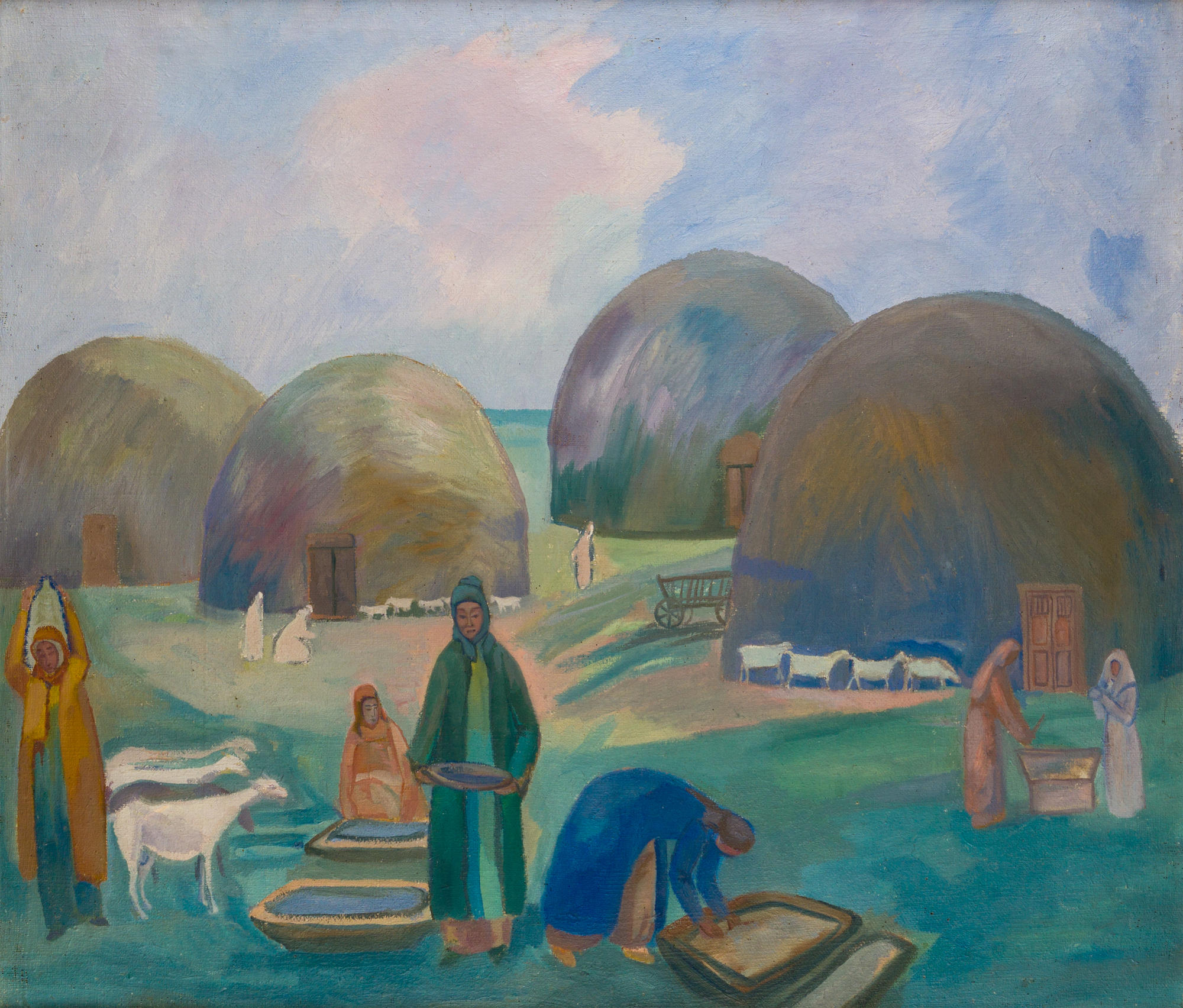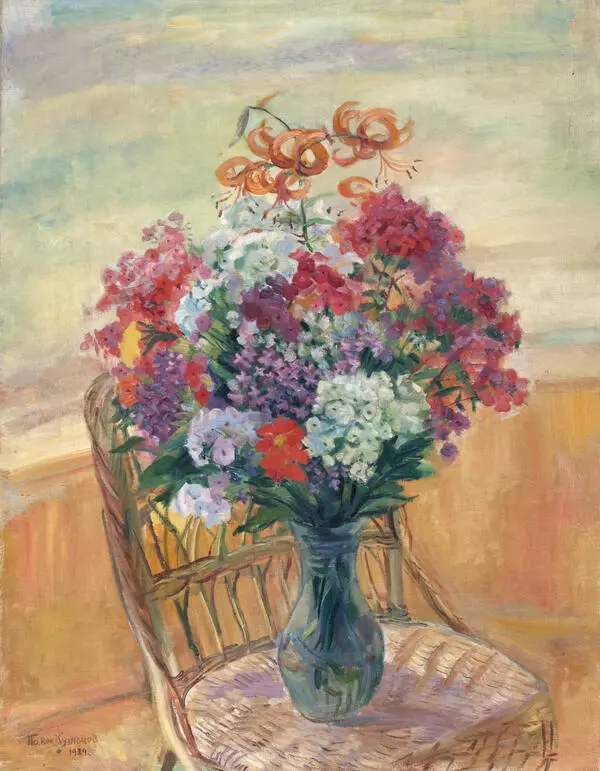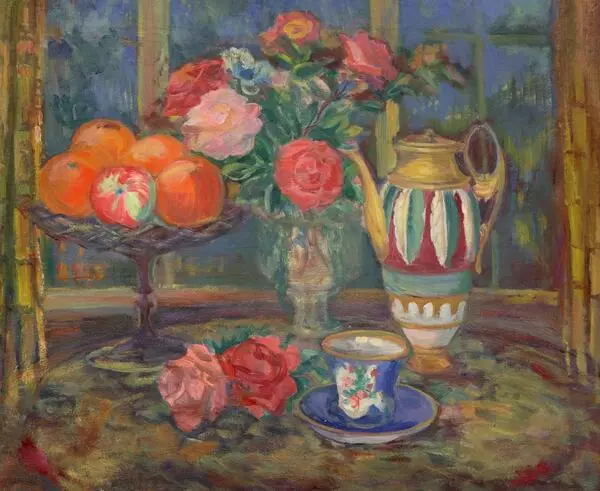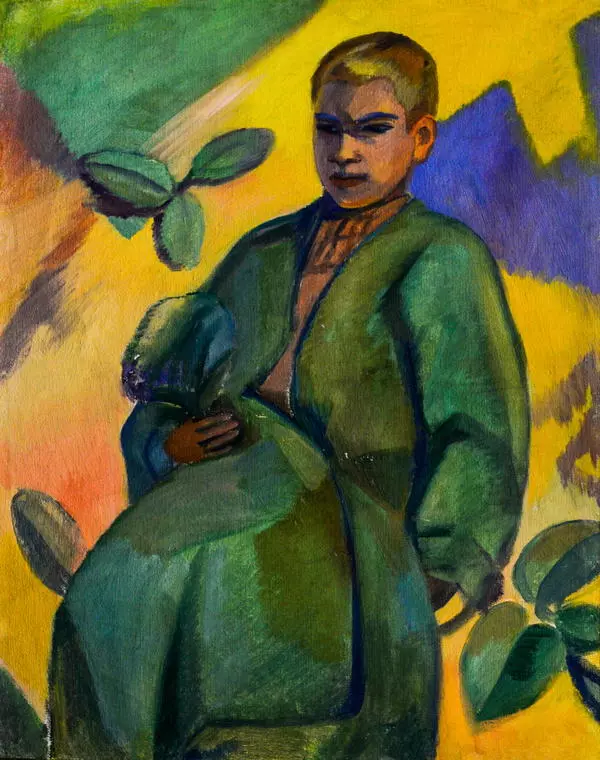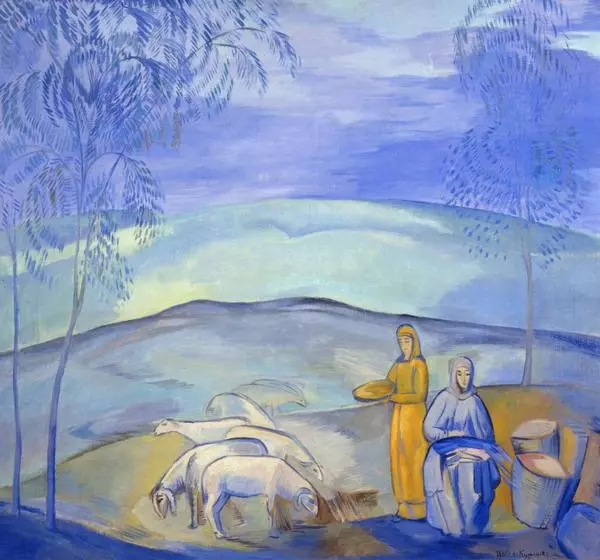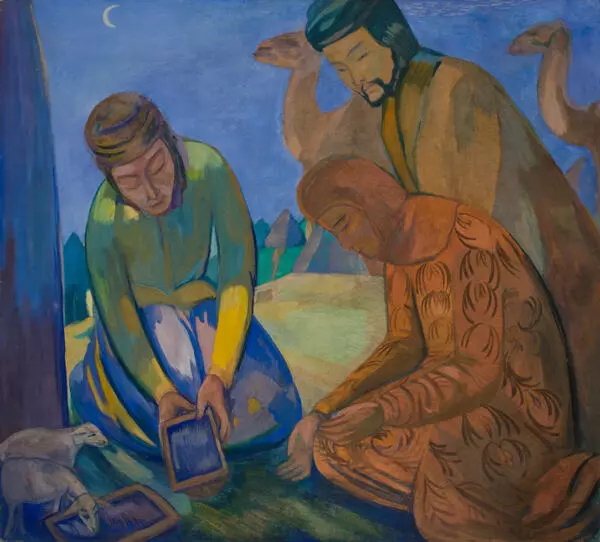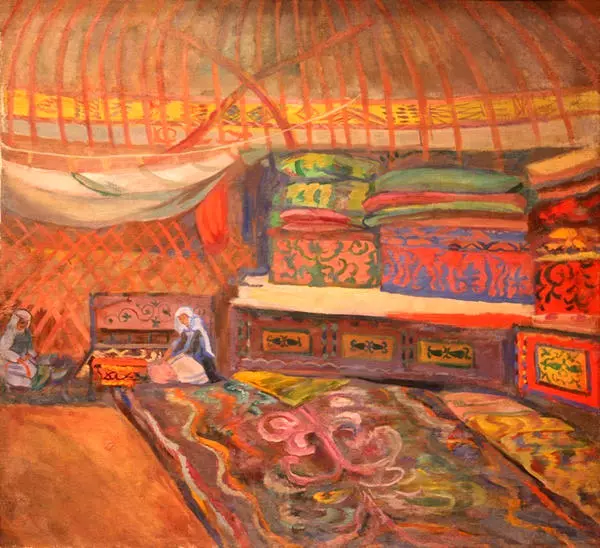Pavel Varfolomeevich Kuznetsov, a Russian and Soviet artist, was born in Saratov in the family of an icon-painter. At the age of thirteen, the future artist entered the Saratov School of Painting and Drawing and in 1897 was admitted to the Moscow School of Arts, Sculpture and Architecture. His first teacher was famous Russia artist Abram Efimovich Arkhipov, later he studied with Konstantin Alexeyevich Korovin and Valentin Alexandrovich Serov.
After graduation, Pavel Kuznetsov participated in many Russian exhibitions. In 1906 he exhibited his paintings in France and received an invitation to join the Society of Autumn Salons — an association of French art community.
In 1907 Pavel Varfolomeevich Kuznetsov became one of the organizers of the Blue Rose art association that represented the ideas of symbolism, its participants focused on delicacy and musical sense in their paintings. Prevailing bluish pastel shades were characteristic of their paintings.
In the late 1900s, the artist was going through a creative crisis and decided to set off on a trip around Russia. He visited trans-Volga region, and then Central Asia. The painting Morning in an Encampment was created during the latter trip. It is penetrated with measured slowness and timeless majesty of the life of Kyrgyz steppe, the nomad lifestyle that the Blue Rose members associated with primeval patriarchal idyll, full of calm and a harmonious union of man and nature.
After his trip to Central Asia Pavel Varfolomeevich Kuznetsov experienced an unprecedented creative upheaval. He created many wonderful paintings that made him an artist of world acclaim.
During the revolutionary years, Pavel Varfolomeevich taught, engaged in publishing and headed the Art Department in the People’s Commission for Education. In 1923 during another trip to France, he painted his famous Paris Comedians. In the late 1920s, Kuznetsov travelled in the Crimea and the Caucasus, creating paintings filled with movement and art. In 1930s, the artist turned to the themes of labor and sport and during the last years of his life returned to landscapes and still life paintings.
Paintings by Pavel Varfolomeevich Kuznetsov may be seen in many Russian and foreign galleries, including Bashkortostan State M.V. Nesterov Art Museum.
After graduation, Pavel Kuznetsov participated in many Russian exhibitions. In 1906 he exhibited his paintings in France and received an invitation to join the Society of Autumn Salons — an association of French art community.
In 1907 Pavel Varfolomeevich Kuznetsov became one of the organizers of the Blue Rose art association that represented the ideas of symbolism, its participants focused on delicacy and musical sense in their paintings. Prevailing bluish pastel shades were characteristic of their paintings.
In the late 1900s, the artist was going through a creative crisis and decided to set off on a trip around Russia. He visited trans-Volga region, and then Central Asia. The painting Morning in an Encampment was created during the latter trip. It is penetrated with measured slowness and timeless majesty of the life of Kyrgyz steppe, the nomad lifestyle that the Blue Rose members associated with primeval patriarchal idyll, full of calm and a harmonious union of man and nature.
After his trip to Central Asia Pavel Varfolomeevich Kuznetsov experienced an unprecedented creative upheaval. He created many wonderful paintings that made him an artist of world acclaim.
During the revolutionary years, Pavel Varfolomeevich taught, engaged in publishing and headed the Art Department in the People’s Commission for Education. In 1923 during another trip to France, he painted his famous Paris Comedians. In the late 1920s, Kuznetsov travelled in the Crimea and the Caucasus, creating paintings filled with movement and art. In 1930s, the artist turned to the themes of labor and sport and during the last years of his life returned to landscapes and still life paintings.
Paintings by Pavel Varfolomeevich Kuznetsov may be seen in many Russian and foreign galleries, including Bashkortostan State M.V. Nesterov Art Museum.
